Tom's Guide Verdict
The Sony Bravia X80K is an inexpensive LCD TV that turns out pleasing visuals and is armed with a number of other desirable features (its sound not among them).
Pros
- +
Generally good picture quality
- +
Excellent value
- +
Well-designed remote
- +
Uses powerful Google TV smart interface
- +
Low input lag for a Sony TV
Cons
- -
Occasional loss of fine detail
- -
Disappointing sound
- -
No HDMI 2.1 ports on most models
Why you can trust Tom's Guide
Price: $449.99
Screen size: 43-inch
Model: KD-43X80K
Resolution: 3,840x2,160
HDR: HDR10, Dolby Vision, HLG
Refresh Rate: 60Hz
Ports: 4 HDMI 2.0, 2 USB
Audio: 20W
Smart TV Software: Google TV
Size (without stand): 37.95x22.17x2.72 inches
Weight (without stand): 22.3 lbs.
Sony’s entry-level line of TVs might not seem to offer a lot to the discriminating shopper, but the Sony Bravia X80K ($449 as tested) punches above its price. With fine picture quality and backed by Sony’s cagey technological innovations and sharply honed attention to fit and finish, the X80K is, in most ways, better than you might expect.
That’s not to say it’s ideal for everyone. It wouldn’t be the best set to use as the centerpiece of an entertainment center in a larger-than-average living room, for example. But if you want something that’s highly affordable and looks as though it’s in a loftier price tier, the X80K is one smart TV that’s a smart way to go.
Sony Bravia X80K TV review: Pricing and availability
The 43-inch Bravia KD-43X80K is the smallest and least expensive model in Sony’s entry-level X80K family of TVs. There are six altogether, ranging in price up to $1,499.99:
- Sony Bravia KD-43X80K (43-inch): $449.99
- Sony Bravia KD-50X80K (50-inch): $529.99
- Sony Bravia KD-55X80K (55-inch): $579.99
- Sony Bravia KD-65X80K (65-inch): $699.99
- Sony Bravia KD-75X80K (75-inch): $999.99
- Sony Bravia KD-85X80K (85-inch): $1,499.99
All the sets in the X80K line share the same basic technologies, internal hardware, and Sony enhancements, so it’s likely that the larger sets will behave similarly to the 43-inch model we evaluated. But it’s worth remembering that there are frequently performance differences between sets in the same family at the lower and upper end of the pricing scale, so what you observe may not be identical to what we did.
Sony Bravia X80K TV review: Design
The 43-inch X80K is small by current TV standards, but it is far from as svelte as many sets you’ll find on the market. It measures 37.95 x 22.17 inches (HxW), and is 2.72 inches thick, giving it the faintest chunky feel. Everything is black and smooth on the front, but the set’s rear combines a series of fins at the top with a nice-looking but sedate square panel taking up most of the space.
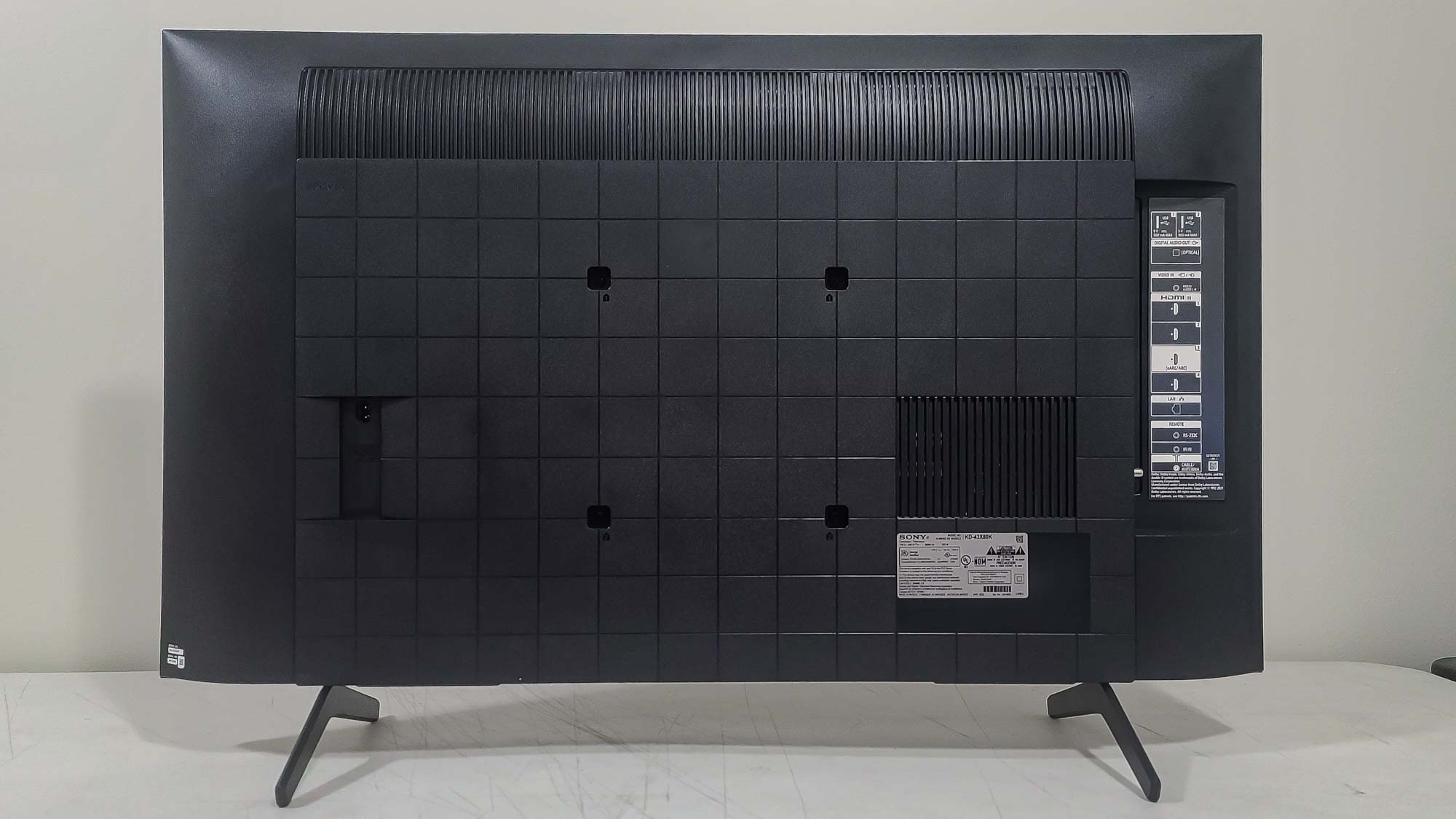
Though the screen’s bezels are thin (about one-sixteenth inch), the beveled top, left, and right edges make the display as a whole look slightly larger than it is. A flat, wide bottom bezel (just shy of 0.75 inch) further contributes to the effect, and hides a Power button just under the center front. The stand is even more minimalist: two foot-style pieces that raise the TV about 2.75 inches off the table. If you’d prefer to mount the TV on the wall, the 200x200mm VESA mounting holes on the back make that possible.
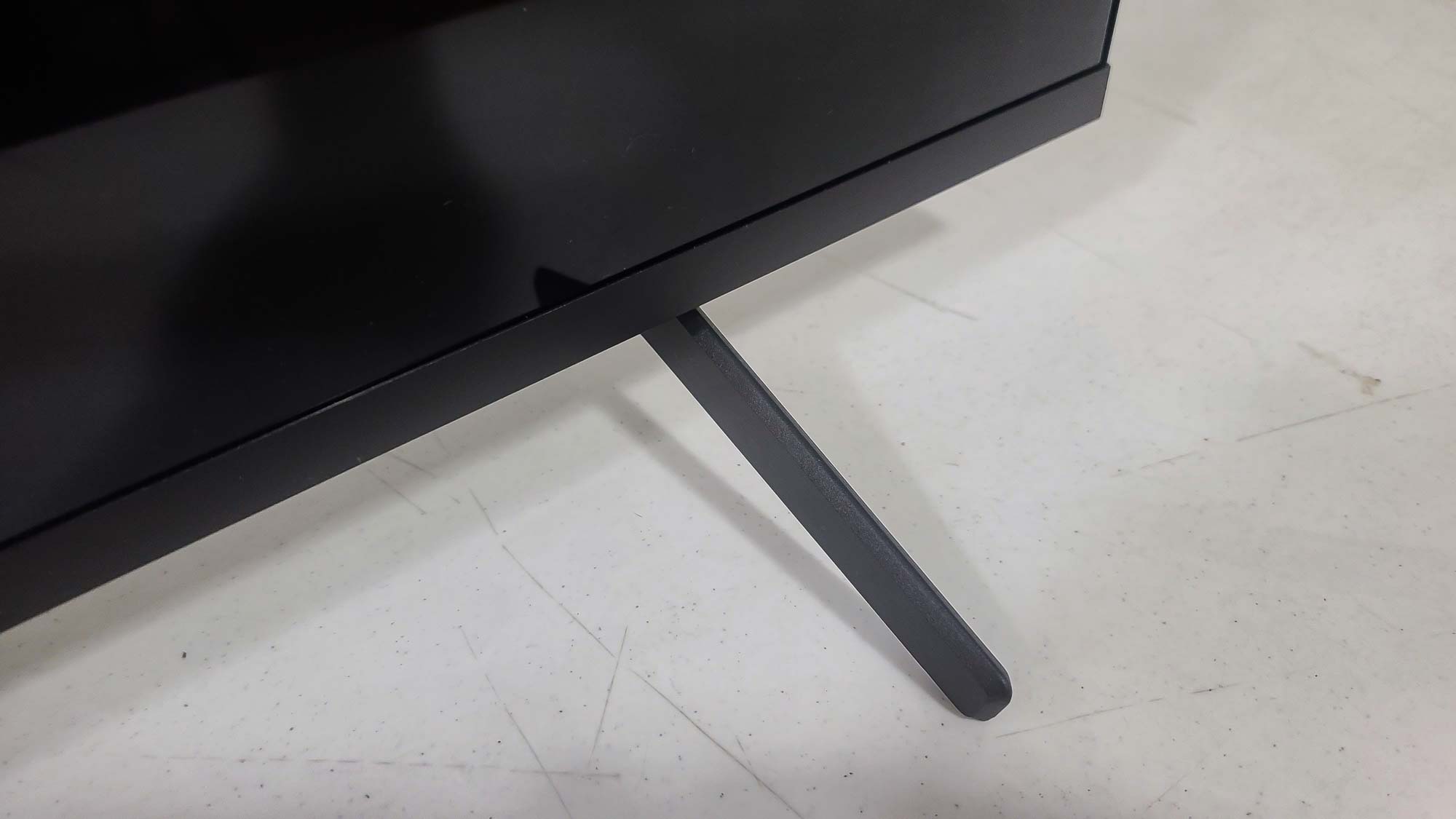
The power cable connects to the right side of the TV. The ports are on the opposite side, in a single vertical line, all facing out toward the left: two USB ports (one with a power maximum of 500mA, the other with 900mA), S/PDIF digital audio auto, a yellow RCA video-in jack, an Ethernet port, two remote inputs (RS-232C and IR input), a coaxial cable connector, and four HDMI ports.
Get instant access to breaking news, the hottest reviews, great deals and helpful tips.

Of the last, one is equipped with ARC and eARC, and all four adhere to the 60Hz HDMI 2.0 specification instead of newer HDMI 2.1 with support for 4K at 120Hz. (In the X80K line, only the 85-inch model has HDMI 2.1 ports.)
Sony Bravia X80K TV review: Test results and performance
The X80K is a traditional LCD set with direct LED backlighting, as opposed to the edge-lit TVs you will often find in the budget range. This, paired with Sony’s robust internal processing, results in generally better picture quality than you’ll usually get for this price. It doesn’t, however, quite compare with what you’ll see on more advanced (and thus more expensive) sets from Sony and other manufacturers.
This was borne out by our lab testing with an X-Rite i1 Pro spectrophotometer, a SpectraCal VideoForge Pro pattern generator, and Portrait Displays’ Calman calibration software. The TV’s maximum SDR brightness was on the lower end of the spectrum of TVs we’ve tested: 272 nits in Standard mode and 248 nits in Custom mode (the closest to an out-of-the-box calibrated picture), whereas the 43-inch Samsung Q60B QLED TV managed 378 and 313 nits in its comparable modes, respectively and the 50-inch Vizio M-Series Quantum smoked both in Standard (with 499 nits) but came in third in its “best” mode (with 121 nits). The Sony’s color was likewise good, with Custom mode’s Delta-E (the difference between the color at the video source and as displayed on the screen, with lower numbers being better) the lowest of the three sets at 1.6907 (versus 1.7727 for the Samsung and 1.85 for the Vizio) and its coverage of the Rec. 709 color gamut the highest (99.6177%, compared with 98.8096% for the Samsung and 98.4549% for the Vizio).

HDR brightness for the X80K approached the Samsung’s on occasion, though the latter TV’s was always between 450 and 500 nits, which the Sony only approached at window sizes of 50% or more in Standard mode. The Vizio sometimes got brighter than the Sony, but only occasionally, and only up to 25%. But the Vizio was the HDR color king, with its 96.17% coverage of the UHDA-P3 color gamut (close to DCI-P3) better than the Sony’s 93.46% or the Samsung’s 90.57%. Whatever you’re watching, the Sony’s picture will get you much — but not all — of the way there, but as priced below both the Samsung and the Vizio, it’s hardly shabby.

In practice, the X80K is satisfying to watch. You’re not going to get as sumptuous a picture as you may with other TVs from Sony or other companies, but we didn’t encounter anything that looked bad on it. You don’t get the full sparkling sense of magic from Spider-Man: No Way Home, due to the somewhat diminished brightness. The dusty foreboding of Denis Villeneuve’s Dune and goosebump-inducing aerial action of Top Gun: Maverick are a bit muted because of the backlighting.
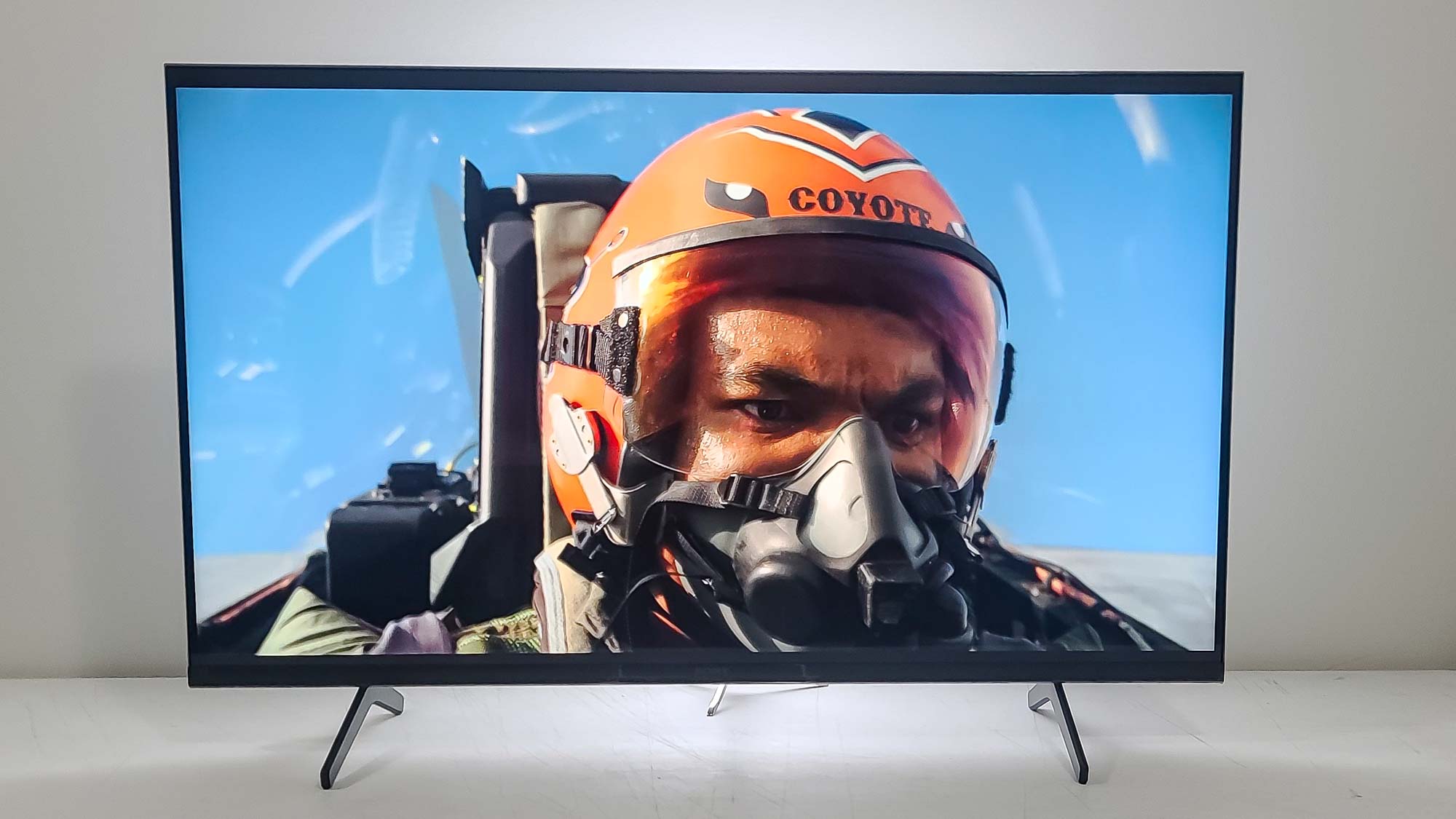
The Batman showed this even more dramatically, as contrast is key; because the screen never gets completely dark (a tiny bit of blooming is visible in many full-black-screen applications), and the brights are never thoroughly dazzling, its scenes lack some of their natural excitement. But given the price of this TV, that seems a forgivable payoff.

Just know that, depending on your viewing distance, you may not get the full benefit of the TV’s 4K resolution. The pixels are just too small to create a crisp, information-packaged picture from very far away. A 1-pixel chess arrangement in our 4K test pattern looked absolutely disastrous, more like static from an old broadcast TV than anything from the current year. But don’t worry: Most anything else will look better, especially if you stick relatively close to the screen. And you and your family and friends don’t even need to stay clustered too close to the center, as the TV retains an impressive amount of its picture quality even when viewed from extreme angles; colors wash out only a little, but everything remains comfortably watchable.
Sony Bravia X80K TV review: Audio
Like most TVs, the X80K has passable—but hardly excellent—sound capabilities. The good news is that the set easily gets room-fillingly loud. The bad news is that you should do everything you can to avoid taking advantage of that capability.
Just about everything sounds okay at lower volumes, but around the 50% mark, distortion begins creeping in. This was evident even in quiet moments, such as the post-funeral scene in Top Gun: Maverick, where it sounded like a white noise machine was hiding in the room with Maverick and Cyclone. In a soprano vocal track I use to listen for treble clipping, some deeply unpleasant shrill overtones crept into the climactic B-flat when the volume was cranked all the way up. The Knife’s “Silent Shout,” meanwhile, had a different issue: It was reasonably clear throughout, but it lacked even a modest thump in its supposed-to-be-pounding bass line.
There’s only so much that’s reasonable from a TV at this price, so none of this was beyond the realm of tolerance. It’s worth mentioning that the 43-inch Samsung Q60B, which costs only $100 more, had markedly better sound (and, it must be said, an inferior picture). Don’t buy or skip the X80K on account of its sound, but if you have real concerns, consider one of Tom’s Guide’s best soundbars. (And we strongly advise not maxing out the set’s volume without one.)
Sony Bravia X80K TV review: Gaming
Not all Sony TVs are terrific for gaming; two otherwise solid sets we’ve seen from the company, the X95K and the A95K, have come up a bit short in that department. The X80K surpasses both, with an input lag time of 11.1ms as measured with a Leo Bodnar lag tester, compared with the X95K’s 18.3ms and the A95K’s 16.1ms. All are below our 20ms threshold for acceptable gaming, but this one comes a lot closer to the 10ms barrier we look at for ultrasmooth results.

You’ll want all the help you can get, as the absence of HDMI 2.1 means the TV doesn’t have its 120Hz refresh rate or Variable Refresh Rate (VRR) functionality. Those do add some juice to gaming, though we didn’t find either strictly necessary when playing Assassin’s Creed Valhalla. The action was suitably silky as protagonist Eivor stalked through the coolly lush environs of Norway and Anglo-Saxon England, even if the lack of piercing HDR highlights prevented it from looking as arresting as it can, particularly when the sun bore its full weight down on the landscape.
Sony Bravia X80K TV review: Smart TV interface
Sony’s smart TV interface of choice remains the exceptionally powerful and user-friendly Google TV. In addition to being connected to plenty of other services you’re likely already using anyway, it’s easy and intuitive to navigate in its own right. Major movies and shows surface near the top of the display, with the app bar below that and the “Continue watching” section under it.
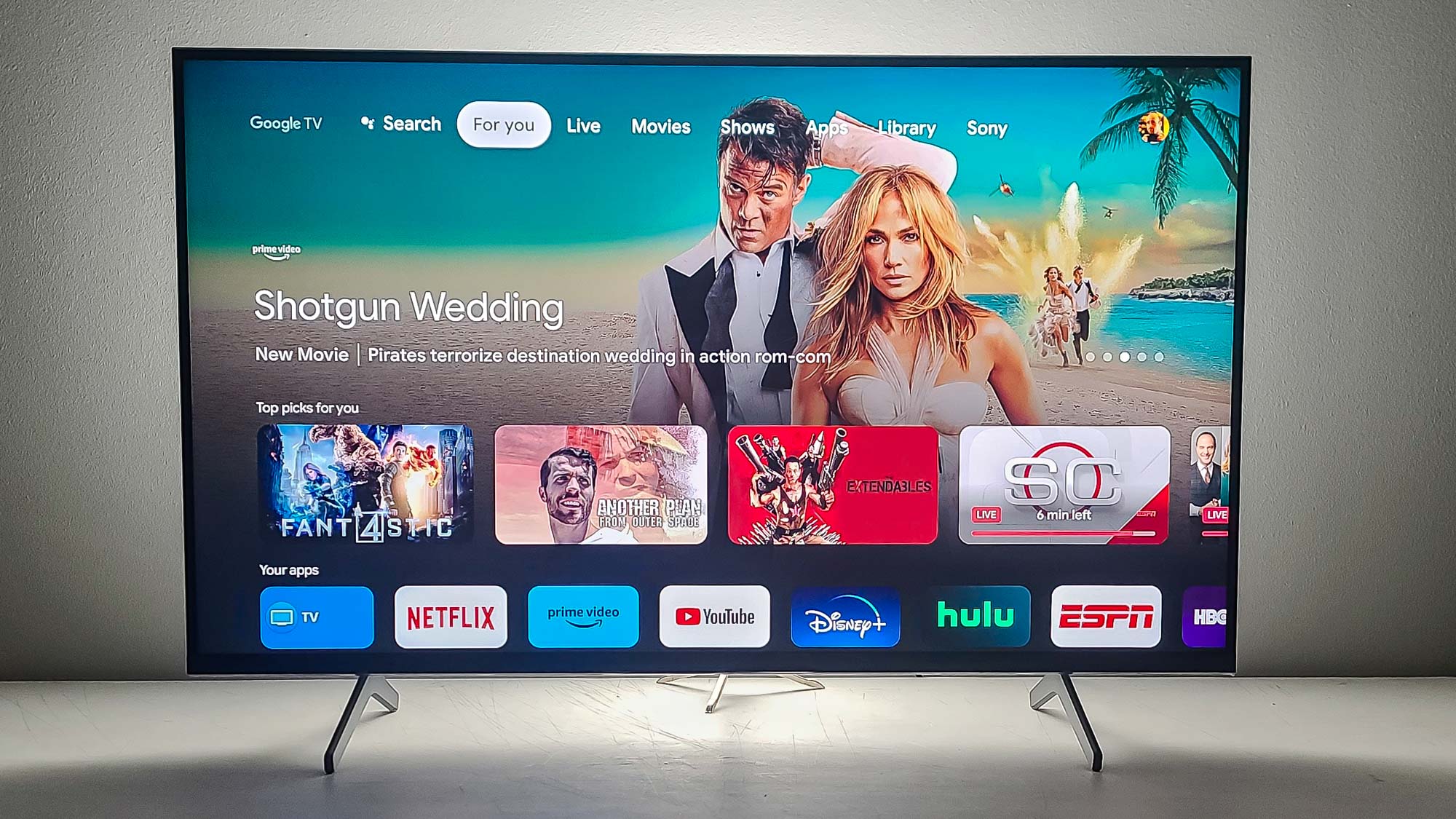
The navigation menu is clean and efficient, and never in the way, providing the full range of Google’s immense capabilities through the Search option, along with “For you” (the home screen), “Live” TV, Movies, Shows, Apps, your personal library, and a full collection of Sony’s advertising and marketing videos.
The X80K does support Sony’s Bravia Cam, which lets you use the TV for video chatting. But unlike with higher-end models (such as the A95K), there is currently no support for other Bravia Cam features such as gestures or Ambient Optimization Pro, which tweaks the picture and sound depending on how many people are in the room and where they’re located. Sony promises the camera may add other features in the future by way of firmware updates; maybe that will change our mind, but right now the Bravia Cam is probably not worth its $199.99 cost for use with the X80K.
Sony Bravia X80K TV review: Remote
Like Sony’s other current-generation TVs, the X80K comes with a new remote that looks like a slimmed-down version of the previous generation’s. It’s shorter, it has far fewer buttons (no number pad, for one thing), and it sports a simplified layout that puts the most essential controls exactly where you’re most likely to need them.
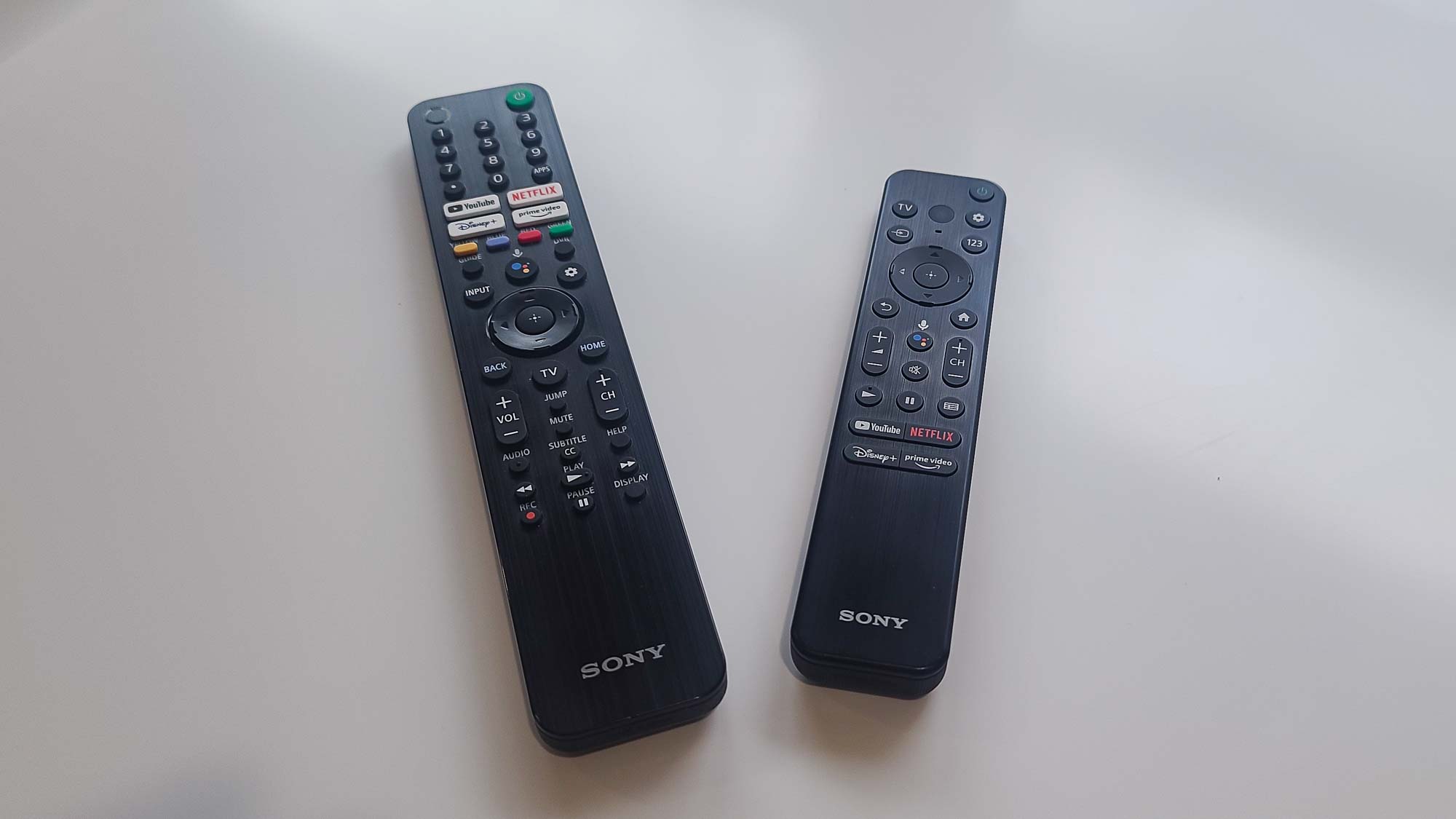
From top to bottom, the button collection comprises: Power, TV, Settings, Inputs, Numbers, a five-way directional pad, Back, Home, Google Assistant, volume and channel controls, Mute, Play, Pause, and Guide. Below that are four dedicated shortcut buttons for YouTube, Netflix, Disney+, and Amazon Prime Video.
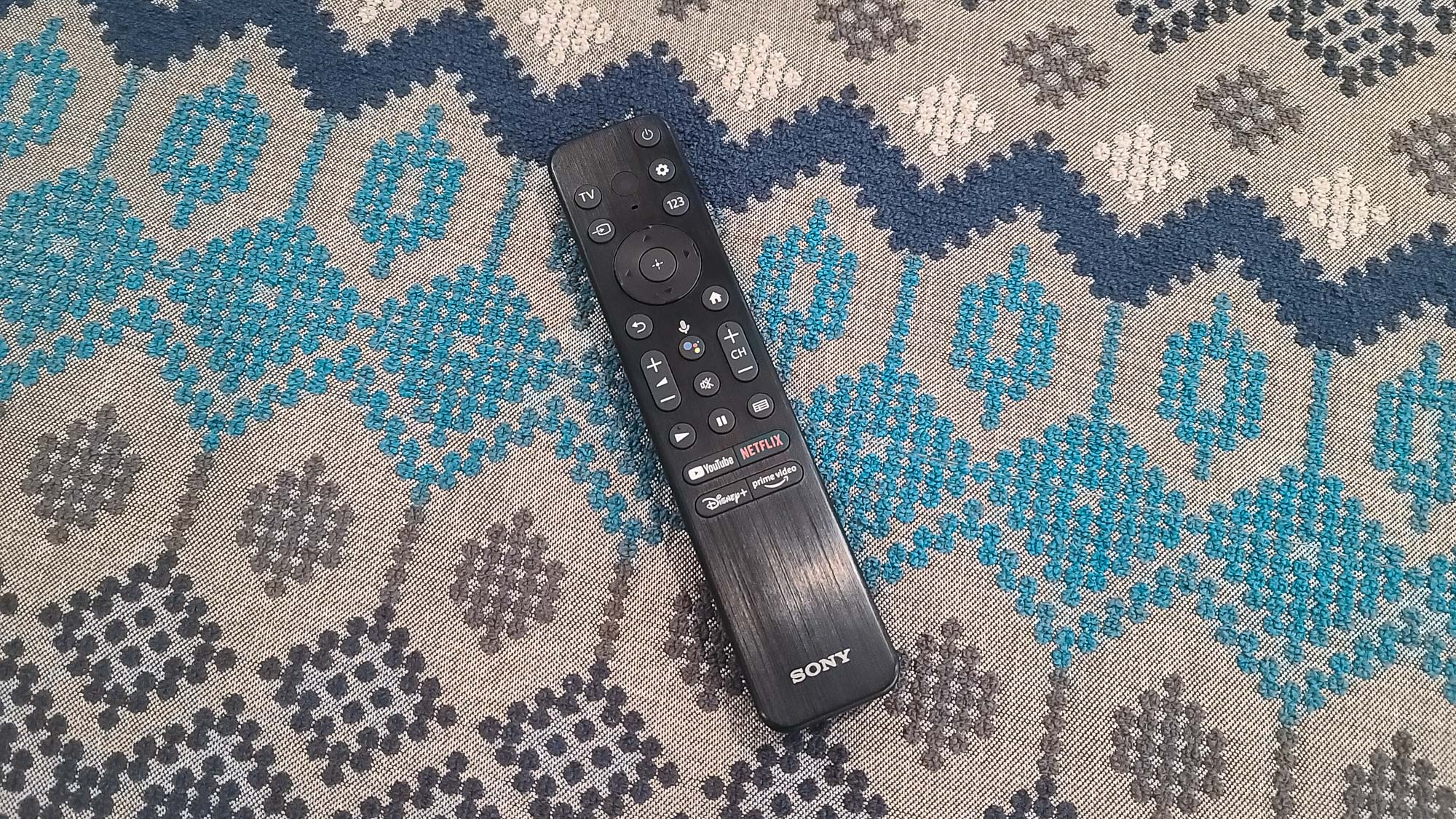
This remote design remains my favorite among the offerings from all TV manufacturers: no fuss, no nonsense, and no problem.
Sony Bravia X80K TV review: Verdict
Fancy, pricy TVs do have a habit of knocking you over with their picture quality; we love the flagship models from LG, Samsung, and, yes, Sony, but one of those will easily set you back as much as $3,000 (and it’s possible to shell out still more).
If you don’t need that or want that, you don’t have to pay for it — and you can still get a respectable TV. You get a lot for your $449.99 with the Sony Bravia X80K, as far as the picture, input lag, and the quality of Google TV and the remote. Comparably sized models of the Samsung Q60B and the Vizio M-Series Quantum better the Sony in some ways, but cost more.
For a simple TV at an affordable price, the Sony X80K is an attractive and effective compromise candidate. Just keep the volume down.
Matthew Murray is the head of testing for Future, coordinating and conducting product testing at Tom’s Guide and other Future publications. He has previously covered technology and performance arts for multiple publications, edited numerous books, and worked as a theatre critic for more than 16 years.


